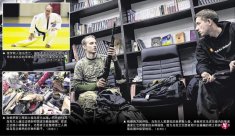(Seoul Composite Electric) Military analysts warn that Asia is entering a dangerous military reserve competition. This is because it was only a small country that was only standing on the sleeve. Now it has followed the footsteps of the power of the power, such as China and the United States to start building an advanced long -range missile library.
China ’s large -scale production range can reach 4,000 kilometers of Dongfeng 26 long -range ballistic missiles. The United States is also developing new weapons to respond to China's influence in the Pacific region.This prompting other countries to start purchasing or developing new missiles in the region is based on security considerations for China, but also to reduce dependence on military reserve to the United States.
Analysts, diplomats, and military officials said that before the end of this 10 years, Asia will have a large number of advanced conventional missiles, which can fly faster, faster, more powerful, and more advanced.This will change the situation in recent years, with obvious and dangerous changes.
Santoro, chairman of the Pacific Forum of US Foreign Policy Research Agency, said: "Asian missile landscapes are changing, and changes are fast."Span>
He said that the possibility of new weapons can balance tensions and assist in maintaining peace."What's more likely, missile diffusion will promote suspicion, trigger arms race, exacerbate tensions, and eventually cause crisis and even war."
Some American allies have developed their own weapons.Australia has recently announced that it will spend 100 billion US dollars (about S $ 137 billion) in 20 years to develop advanced missiles. Japan has also invested huge funds to develop long -range air -firing weapons and develop new car anti -ship missiles.South Korea has the most powerful internal ballistic missile program.Davin Potter, director of the departments of the Washington Military Reserve Control Association, said that although North Korea seems to be the main reason for South Korea's capacity to strengthen missiles, "but Seoul is developing a range of missile systems that fight against North Korea."
Reuters analyzed that Taiwan did not publicly announce the ballistic missile plan, but the US State Department approved the requirements for Taiwan's military sales in December last year to sell dozens of American short -range ballistic missiles to Taiwan.Taiwan is also producing weapons and developing cruise missiles on large -scale, and the range can be far from Beijing.A diplomatic source in Taipei said that the traditional defense of Taiwan is to defend the local and resist China's invasion. Now it has begun to appear more aggressive, and the difference between the defense and offensiveness of weapons is becoming more and more blurred.
The recent report by Zhao Tong, a strategic security expert in Beijing, pointed out that when the conventional long -range strike capacity of the United States allies enhances, the chances of using these capabilities when regional conflicts occur.




